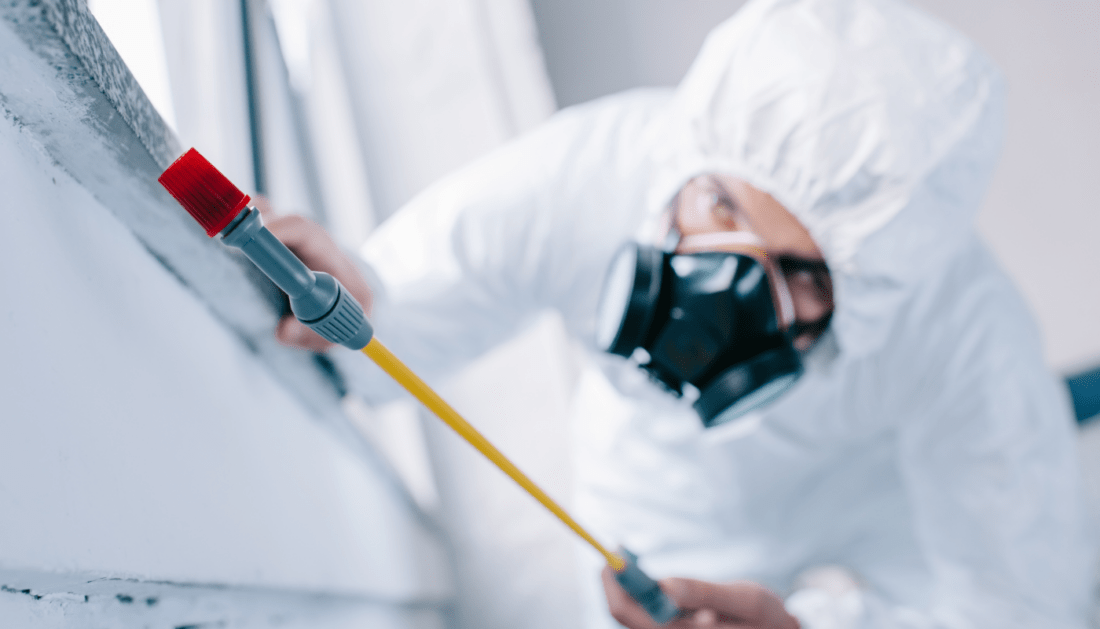Pests are more than just an annoyance—they are a major threat to health and hygiene. Many insects and rodents carry dangerous bacteria, viruses, and parasites that can spread throughout a home, putting families at risk of serious illnesses. From cockroaches contaminating food to mosquitoes transmitting deadly diseases, pest infestations are a direct hazard to public health.

While DIY pest control methods may provide temporary relief, they often fail to address the root of the problem. Pests are highly adaptable, and without professional intervention, infestations can grow, increasing the risk of disease transmission. The key to protecting a household is not just eliminating pests but preventing them from returning.
Understanding the connection between pests and diseases highlights the importance of proactive pest management. A professional pest control service plays a critical role in minimizing health risks by implementing targeted treatments and long-term prevention strategies.
How Pests Spread Disease in Homes
Pests don’t just invade living spaces—they bring harmful pathogens with them. Whether crawling on food, nesting in walls, or contaminating surfaces, these invaders can spread bacteria and viruses that lead to severe illnesses.
1. Cockroaches: The Ultimate Germ Spreaders
Cockroaches are one of the most unsanitary pests found in homes. They crawl through sewers, garbage, and decaying matter, picking up harmful bacteria along the way.
Diseases they spread:
- Salmonella and E. coli – Can cause food poisoning, severe stomach infections, and diarrhea.
- Allergens and asthma triggers – Cockroach droppings, shed skins, and saliva can worsen respiratory conditions, especially in children.
How they contaminate homes:
- Roaming across kitchen counters, contaminating food and utensils.
- Hiding in cabinets, leaving behind feces and bacteria.
- Breeding in warm, moist areas like basements and under sinks.
2. Rodents: Carriers of Deadly Viruses
Mice and rats are notorious for spreading diseases, often through their droppings, urine, and saliva. These pests invade homes searching for food and warmth, leaving behind contaminated surfaces in the process.
Diseases they spread:
- Hantavirus – A potentially fatal respiratory disease transmitted through rodent droppings.
- Leptospirosis – Bacteria that cause fever, muscle aches, and kidney damage.
- Plague – Though rare today, some rodent fleas can still carry the bacteria responsible for the plague.
How they contaminate homes:
- Chewing through food packaging and contaminating stored goods.
- Urinating and defecating inside cabinets, pantries, and along baseboards.
- Gnawing on electrical wires, creating potential fire hazards.
3. Mosquitoes: Silent Killers
Mosquitoes are one of the deadliest pests in the world, responsible for transmitting life-threatening diseases through their bites. Unlike other pests that contaminate food and surfaces, mosquitoes spread infections directly into the bloodstream.
Diseases they spread:
- West Nile virus – Causes flu-like symptoms, and in severe cases, neurological issues.
- Zika virus – Poses risks to pregnant women, potentially causing birth defects.
- Dengue fever and malaria – Found in certain regions but can spread through international travel.
How they invade homes:
- Breeding in standing water around the property, such as birdbaths, clogged gutters, and potted plants.
- Entering homes through open windows and doors without screens.
- Biting at night, often going unnoticed until symptoms appear.
4. Bed Bugs: Hidden Health Risks
Bed bugs don’t transmit diseases like mosquitoes or rodents, but they pose serious health concerns due to their bites and ability to trigger allergic reactions.
Health risks:
- Severe itching and allergic reactions – Bites cause red, swollen welts that can lead to infections if scratched excessively.
- Sleep disturbances and anxiety – Infestations cause psychological distress, affecting sleep quality and mental health.
How they spread:
- Hitchhiking on luggage, clothing, and furniture from infested areas.
- Hiding in mattresses, bed frames, and upholstery, making them difficult to detect.
5. Flies: Contaminating Food and Surfaces
Flies may seem like a minor nuisance, but they are carriers of dozens of disease-causing bacteria. They thrive in filth, feeding on rotting food, garbage, and even animal waste before landing on human food.
Diseases they spread:
- Cholera and dysentery – Bacterial infections that cause severe diarrhea and dehydration.
- Typhoid fever – A life-threatening illness spread through contaminated food.
How they contaminate homes:
- Laying eggs in uncovered trash, leading to maggot infestations.
- Landing on food, transferring bacteria from dirty surfaces.
- Breeding in drains, compost piles, and decaying organic matter.
Why Professional Pest Control Is Essential for Disease Prevention
While DIY pest control methods may temporarily reduce infestations, they rarely eliminate the problem completely. Professional pest control Monmouth County provides a more effective and long-term solution.
1. Identifying the Root Cause
- Professionals conduct thorough inspections to locate nests, breeding areas, and entry points.
- Targeted treatments eliminate pests at the source, preventing reinfestations.
2. Using Safe and Effective Treatments
- Pest control experts use industry-approved products that are safe for humans and pets but deadly for pests.
- Specialized treatments ensure thorough extermination without unnecessary pesticide exposure.
3. Long-Term Prevention Strategies
- Sealing cracks and entry points to prevent pests from re-entering the home.
- Providing expert advice on maintaining a pest-free environment through sanitation and proper storage.
4. Reducing Health Risks
- Eliminating pests lowers the chances of disease transmission.
- Regular pest control treatments create a healthier home environment for families.
How Homeowners Can Help Keep Their Homes Pest-Free
While professional pest control is the most reliable solution, homeowners can take additional steps to reduce pest activity between treatments.
✔ Keep food sealed – Store food in airtight containers to prevent contamination.
✔ Eliminate standing water – Mosquitoes breed in water, so empty containers and fix leaks.
✔ Seal entry points – Close off gaps in doors, windows, and walls to prevent rodent and insect invasions.
✔ Maintain a clean home – Regularly vacuum, wipe down surfaces, and dispose of garbage properly.
✔ Schedule regular pest inspections – Catching an infestation early prevents it from worsening.
Final Thoughts
Pests are more than just an inconvenience—they are carriers of dangerous diseases that threaten the health of homeowners and their families. Cockroaches contaminate food, rodents spread bacteria through droppings, mosquitoes transmit deadly viruses, and flies carry harmful pathogens. Without proper pest control, the risk of illness increases significantly.
Taking a proactive approach to pest management is essential for maintaining a safe and healthy living environment. While basic preventive measures can help, professional pest control offers the most effective protection against disease-carrying pests. Agile Pest Control understands the importance of disease prevention and provides expert solutions to keep homes pest-free.
Protecting your home from pests is about more than just comfort—it’s about safeguarding the health of everyone inside. By staying vigilant and using professional pest control services, homeowners can reduce the risks of pest-related diseases and enjoy a cleaner, safer living space.



